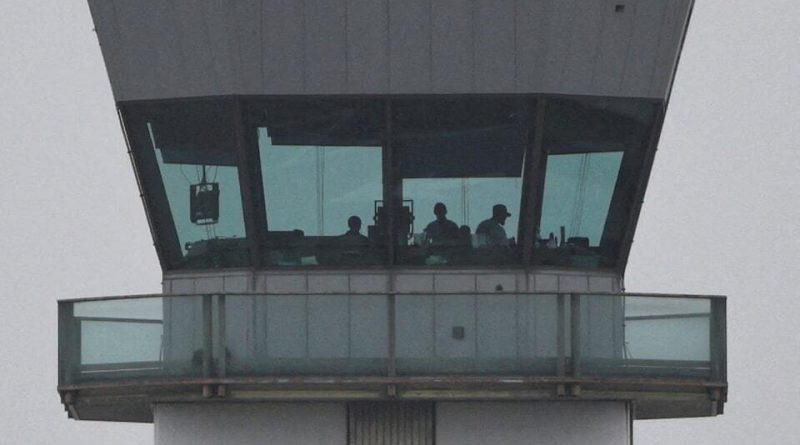Air Traffic Controller Shortages Challenge U.S. Airports Amid Shutdown, but Recovery Efforts Begin
Airports across the United States faced staffing shortages as air traffic controllers continued to work without pay during the ongoing government shutdown.
Despite these challenges, operations are slowly being stabilized as officials step in with urgent measures to ensure flight safety and efficiency.
Transportation Secretary Sean Duffy confirmed that over 20 instances of air traffic controller shortages were recorded on Saturday, marking one of the highest levels since the shutdown began on October 1.
Yet, he emphasized that the aviation system remains secure and resilient, thanks to the commitment of thousands of professionals working tirelessly behind the scenes.
The shutdown, now in its fourth week, has created widespread disruptions in government operations. Around 13,000 air traffic controllers and nearly 50,000 Transportation Security Administration officers continue to report for duty, even without pay.
Their dedication reflects the vital role they play in keeping the nation’s airports functioning safely during this uncertain period.
Officials say that although the strain is visible, safety remains the top priority. The Federal Aviation Administration (FAA) reported that staffing shortages were recorded at major airports including Chicago, Newark, and Los Angeles.
A temporary ground stop was even issued at Los Angeles International Airport due to controller shortages, but flights soon resumed smoothly once the issue was resolved.
Transportation Secretary Duffy noted that despite limited resources, the FAA is actively reallocating staff and optimizing flight schedules to reduce delays.
He expressed confidence that once the government resumes full operations, the agency will prioritize hiring and training new air traffic controllers to meet national staffing goals.
Flight tracking data from FlightAware showed more than 5,000 delays across the country on Saturday and another 2,500 by midday Sunday.
While delays have increased since the shutdown began, aviation experts remain confident that the system can withstand short-term disruptions without compromising passenger safety.
Duffy acknowledged the growing strain on controllers, many of whom are working six-day weeks and overtime hours. He also praised their resilience, stating that their professionalism continues to uphold one of the world’s safest air travel systems.
“These men and women are the backbone of our aviation network,” he said. “Their commitment is what keeps America moving, even during difficult times.”
Many controllers, however, are beginning to explore secondary jobs or temporary income sources as the shutdown extends into its fourth week.
Their last paycheck covered only partial pay for September, and Tuesday would have marked the first missed payday of October. Despite the financial stress, there has been no compromise in their dedication to passenger safety and air traffic management.
The FAA has been working on long-term solutions to address the ongoing shortage of air traffic controllers. Currently, the agency is about 3,500 controllers short of its ideal staffing target.
Before the shutdown, the FAA had already been implementing accelerated hiring programs, expanding training capacity, and offering retention incentives to ensure steady operations.
During the 2019 government shutdown, similar staffing shortages led to increased absenteeism and flight delays, especially in high-traffic regions like New York and Washington.
However, this time, the FAA is better prepared. Improved contingency planning, flexible scheduling, and real-time communication systems are helping airports manage the situation more effectively.
Industry experts believe that this temporary turbulence could serve as a wake-up call to modernize and strengthen the U.S. air traffic control system.
Investments in technology, digital flight management tools, and training infrastructure are expected to make the system more resilient against future disruptions.
Secretary Duffy has also called for bipartisan cooperation to end the shutdown and restore normal operations. He highlighted that the aviation sector is essential not only for travel but also for trade, business, and emergency transport.
“Every delay affects not just passengers but the nation’s economy,” he said. “We owe it to the American people to resolve this swiftly.”
While political disagreements continue in Congress, there are signs of progress. Lawmakers from both parties have expressed readiness to discuss temporary funding measures to bring relief to federal workers. Several major airlines have also voiced support for legislative efforts that prioritize the aviation workforce.
Despite the difficulties, airports remain operational, flights continue to move, and the system—though strained—is holding strong. Behind the radar screens, thousands of dedicated professionals are ensuring that every takeoff and landing happens safely.
The current situation, though challenging, underscores the resilience of the U.S. aviation industry. It also highlights the unwavering spirit of the country’s air traffic controllers—professionals who continue to serve their nation under extraordinary circumstances.
As the government works toward resolving the shutdown, optimism remains high that once full funding resumes, America’s skies will return to normal operation.
For now, the country’s aviation network continues to operate on a foundation of dedication, skill, and unity—a testament to the strength and spirit of those who keep the skies safe.



